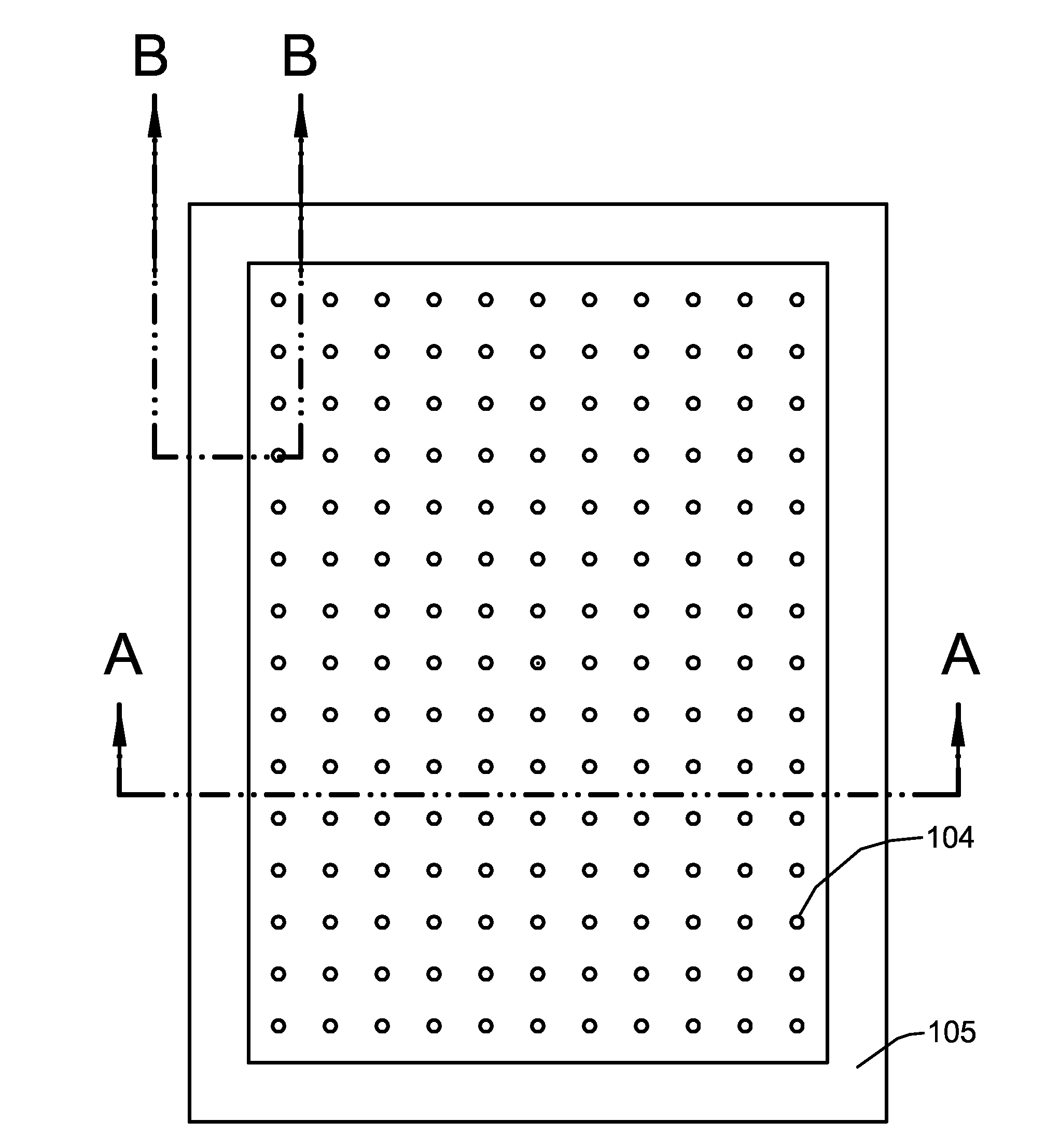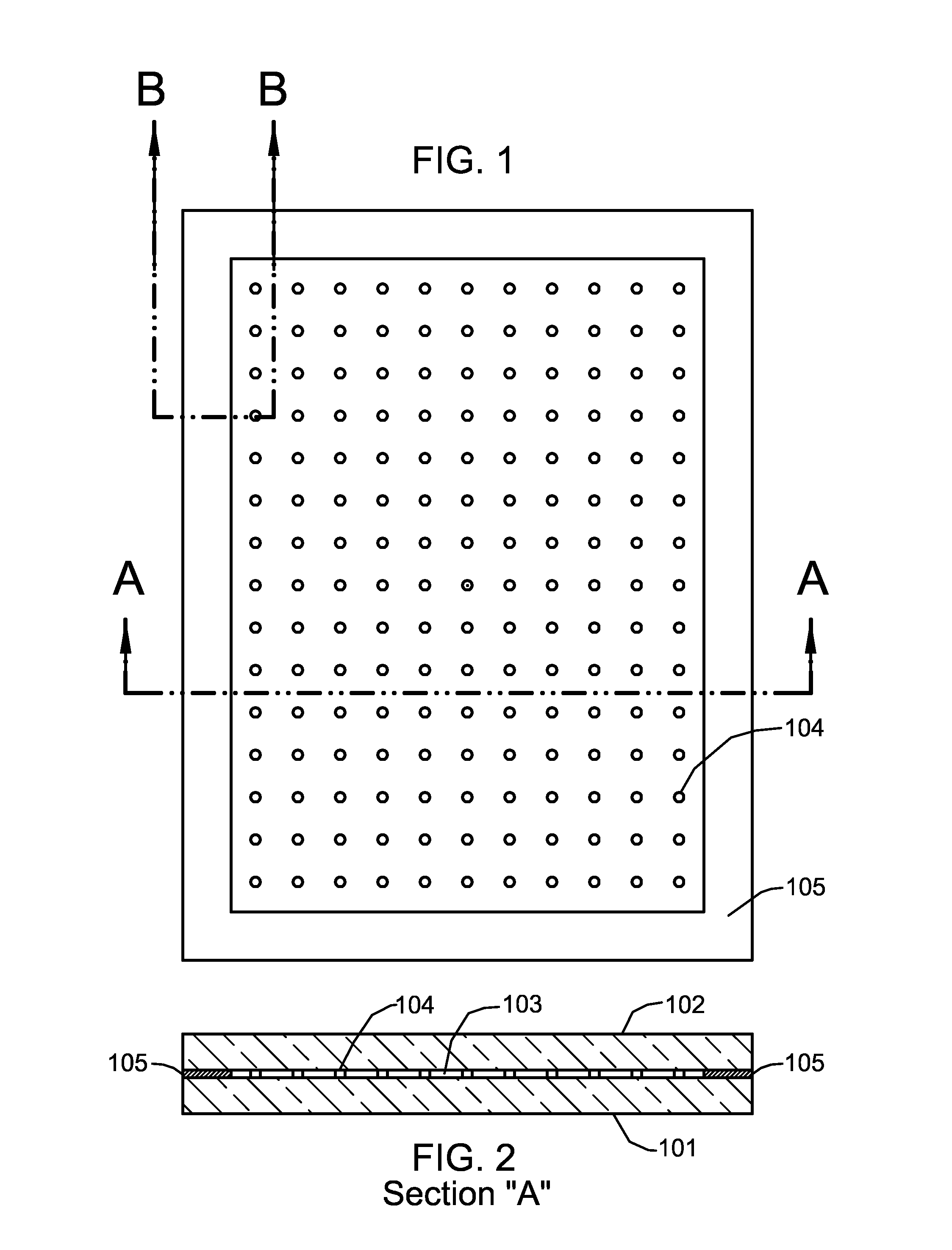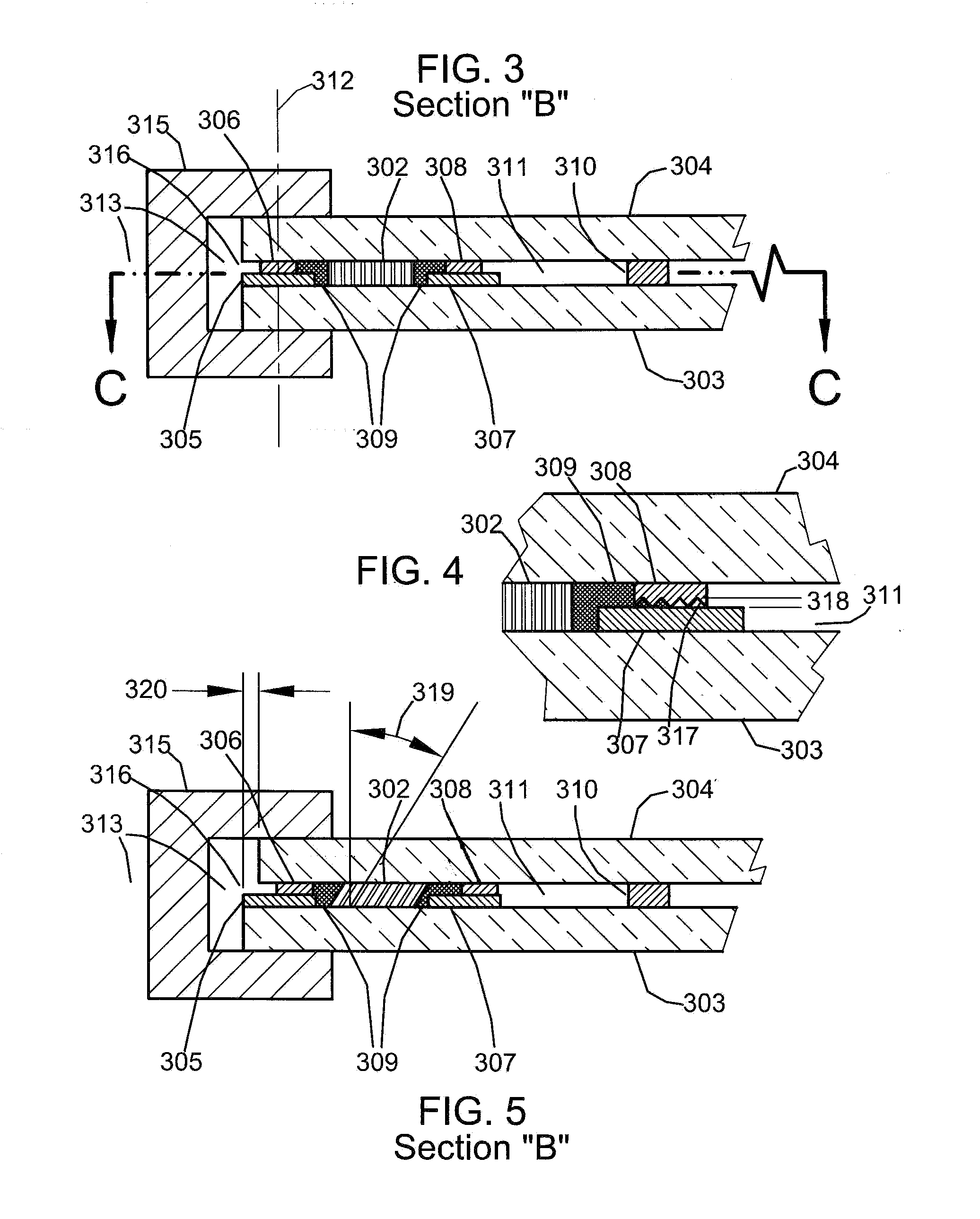Vacuum insulating glass unit with viscous edge seal
- Summary
- Abstract
- Description
- Claims
- Application Information
AI Technical Summary
Benefits of technology
Problems solved by technology
Method used
Image
Examples
first embodiment
[0134]FIG. 3 is a cross sectional view (as referenced by FIG. 1) of the edge region of a VIG unit according to this invention showing an edge seal that comprises viscous material 302 with low gas permeability and barriers that constrain viscous material 302 that include: glass sheets 303 and 304; strip spacers 305, 306, 307, 308; and lubricating low vapor pressure viscous barrier 309. Strip spacers 305, 306, 307, 308 may be made of 420 stainless steel, which has virtually the same coefficient of thermal expansion as soda lime glass, or they may be made of PE Polyethylene or other suitable polymers.
[0135]FIG. 3 shows the edge region under the condition that the ambient air temperatures on either side of the unit are the same, as would occur if the unit was in service in a building and the indoor and outdoor temperatures were the same. Glass sheets 303 and 304 are separated by an array of spacers 310. The thickness of spacers 310, and therefore the distance between glass sheets 303 an...
second embodiment
[0158]FIG. 8 is a cross sectional view (as referenced by FIG. 1) of the edge region of a VIG unit according to this invention showing an edge seal that comprises viscous material 802 with low gas permeability and barriers to constrain viscous material 802 that include: glass sheets 803 and 804; strip spacers 805, 806, 807, and 808; lubricating low vapor pressure viscous barrier 809; and end cap 815. FIG. 8 shows the edge region under the condition that the ambient air temperatures on either side of the unit are the same, as would occur if the unit was in service in a building and the indoor and outdoor temperatures were the same. Viscous material 802 with low gas permeability and viscous barrier 809 may continue unbroken around the edge regions of glass sheets 803 and 804. Strip spacers 805, 806, 807, 808, and end cap 815 may continue unbroken around the edge regions of glass sheets 803 and 804. End cap 815 may place a clamping or compressive force against glass sheets 803 and 804. ...
third embodiment
[0159]FIG. 9 is a cross sectional view (as referenced by FIG. 1) of the edge region of a VIG unit according to this invention showing an edge seal that comprises viscous material 902 with low gas permeability and barriers to constrain viscous material 902 that include: glass sheets 903 and 904, elastic membrane 905, and end cap 906. Elastic membrane 905 is cemented or otherwise affixed to glass sheets 903 and 904. Elastic membrane 905 need not have low gas permeability so it can be made of a material and with a thickness that stretches easily and with very little force. FIG. 9 shows the edge region under the condition that the ambient air temperatures on either side of the unit are the same as would occur if the unit was in service in a building and the indoor and outdoor temperatures were the same. Glass sheets 903 and 904 are separated by an array of spacers 907 and by strip spacer 908. Viscous material 902, elastic membrane 905, end cap 906 and strip spacer 908 may continue unbro...
PUM
| Property | Measurement | Unit |
|---|---|---|
| Pressure | aaaaa | aaaaa |
| Viscosity | aaaaa | aaaaa |
| Vacuum | aaaaa | aaaaa |
Abstract
Description
Claims
Application Information
 Login to View More
Login to View More - R&D
- Intellectual Property
- Life Sciences
- Materials
- Tech Scout
- Unparalleled Data Quality
- Higher Quality Content
- 60% Fewer Hallucinations
Browse by: Latest US Patents, China's latest patents, Technical Efficacy Thesaurus, Application Domain, Technology Topic, Popular Technical Reports.
© 2025 PatSnap. All rights reserved.Legal|Privacy policy|Modern Slavery Act Transparency Statement|Sitemap|About US| Contact US: help@patsnap.com



